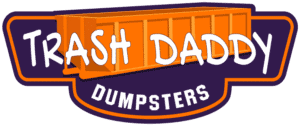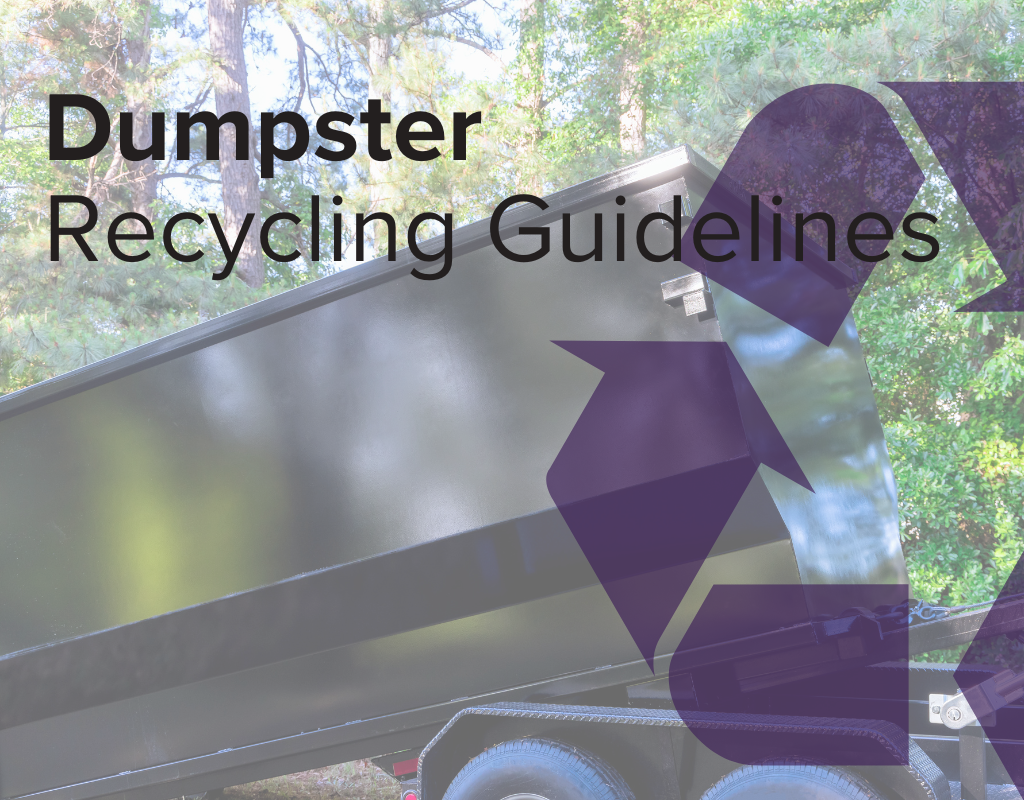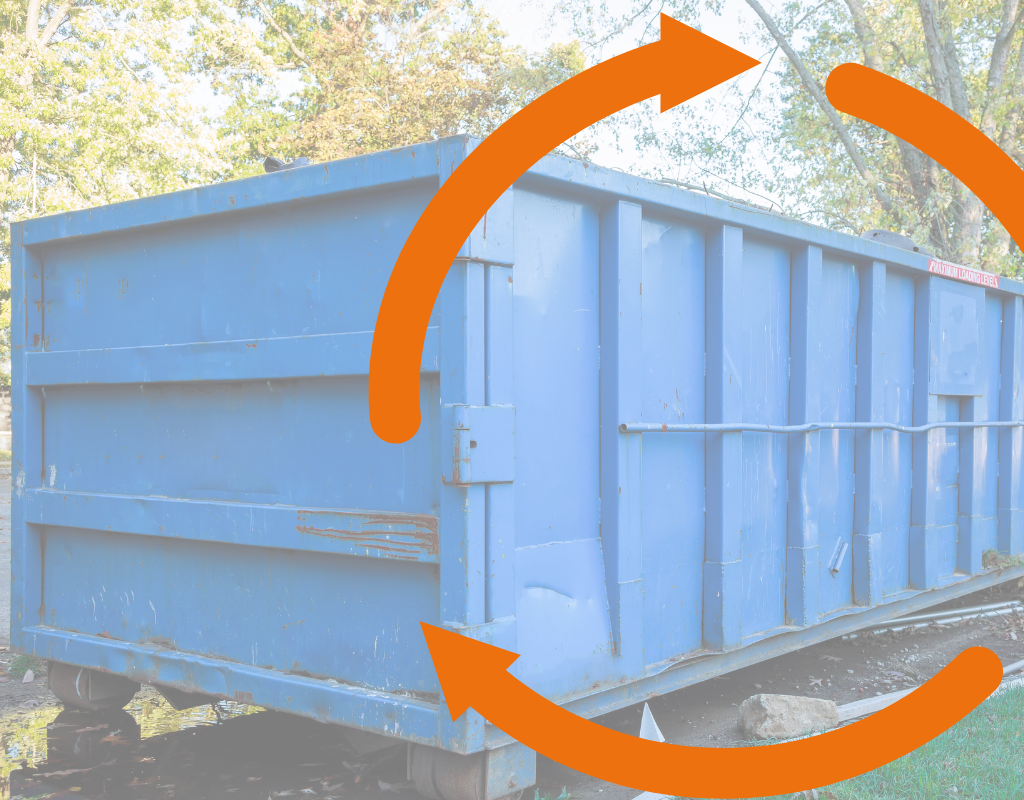


Not everything can be recycled in a dumpster. According to dumpster recycling guidelines, materials such as paper, cardboard, plastics labeled #1 and #2, glass bottles, and aluminum cans are generally accepted. However, hazardous waste including chemicals, batteries, electronics, food-contaminated containers, and bulky household items like mattresses are prohibited. Practicing eco-friendly dumpster disposal means learning what items can go in dumpster recycling, understanding the difference between hazardous vs recyclable dumpster waste, and taking steps on how to separate recyclables for dumpster use in order to prevent contamination and reduce landfill waste.
The way communities handle waste has changed dramatically over the past two decades, and dumpster rentals are no longer just about tossing everything into a large container. With landfill space shrinking and recycling standards becoming stricter, more people are paying attention to dumpster recycling guidelines. Whether you are renovating your home, managing a construction project, or handling a major cleanup, knowing how to use a dumpster responsibly plays a crucial role in protecting the environment. While Trash Daddy Dumpsters does not provide dumpsters for recycling, we want to ensure you know you have options when it comes to disposing of waste.
Eco-friendly dumpster disposal is not only about following the law; it is also about reducing unnecessary waste and making sure that recyclable items are put back into the supply chain. Every year, millions of tons of recyclable materials end up in landfills because of contamination or improper sorting. By understanding what items can go in dumpster recycling and what must be kept out, homeowners, contractors, and businesses can contribute to a more sustainable waste management system. This article explores exactly what can and cannot be placed in a recycling dumpster, explains how to separate recyclables correctly, and outlines the environmental benefits of proper disposal.
Dumpster recycling guidelines exist because not every material placed in a dumpster can be properly processed at a recycling facility. When people hear the word dumpster, they often imagine a catch-all container where everything from cardboard boxes to broken furniture can be thrown away. In reality, waste management companies and municipalities provide very specific instructions on what can be recycled and what needs to be disposed of separately.
Recycling dumpsters are designed to accept common materials such as clean cardboard, office paper, aluminum cans, and glass bottles. However, these materials must remain uncontaminated to be accepted by material recovery facilities. For example, a single greasy pizza box or a plastic container with leftover food can ruin an entire load of otherwise recyclable material. That is why dumpsters designated for recycling often come with clear signage and rules that must be followed by both businesses and residents.
Trash Daddy Dumpsters does not provide recycling roll offs, but generally speaking, guidelines can vary depending on your location. Municipal codes, waste hauler policies, and local recycling infrastructure all play a role in what can be accepted. The Environmental Protection Agency (EPA) provides national recommendations, but your local recycling authority or dumpster rental provider will always have the final say. Understanding these dumpster recycling guidelines before filling your container ensures that you avoid contamination fees and stay in compliance with local regulations.
When it comes to determining what items can go in dumpster recycling, the list is fairly straightforward but requires attention to detail. Clean and dry paper products are always a safe bet. This includes office paper, newspapers, magazines, and flattened cardboard boxes. These materials are some of the most commonly recycled and can easily be processed into new products if free of food residue or plastic coatings.
Plastics are also accepted, but only specific types. Containers marked with recycling codes #1 (PET) and #2 (HDPE) are widely recyclable, while higher numbers often are not. Plastic bottles, milk jugs, and detergent containers typically fall into this category, provided they are rinsed and empty. Glass bottles and jars are also generally accepted, but it is important to avoid ceramics, mirrors, and window glass, as these materials melt at different temperatures and can contaminate recycling batches.
Metal recycling is another major component of dumpster recycling guidelines. Aluminum cans, tin cans, and certain types of scrap metal can be placed in a recycling dumpster, though bulky or industrial-grade scrap may need a specialized collection. In some regions, even yard waste such as leaves and branches can be disposed of in recycling dumpsters, but this varies depending on local composting and green waste programs.
By focusing on materials like paper, plastics, glass, and metals, and ensuring they are free of contaminants, individuals and businesses can maximize the efficiency of their recycling efforts.

While many everyday materials are recyclable, dumpster recycling guidelines are equally clear about what must not go in a recycling dumpster. This is where the distinction between hazardous vs recyclable dumpster waste becomes critical. Hazardous items, such as paint, solvents, motor oil, and cleaning chemicals, pose significant risks to both human health and recycling facilities. These substances can leak, ignite, or release toxic fumes, making them dangerous for workers and the environment.
Electronic waste also falls into the prohibited category. Items such as computers, televisions, and batteries contain heavy metals like lead, mercury, and cadmium, which require specialized handling. Disposing of these items in a recycling dumpster can contaminate entire loads and expose facilities to dangerous substances.
For anything not recyclable, and isn’t hazardous, rent a dumpster online with us!
Household items such as appliances, mattresses, and tires are also restricted. Large appliances often contain refrigerants or other components that cannot be recycled through standard dumpster programs. Mattresses and tires are difficult to process in recycling facilities and usually require drop-off at designated collection sites. Even common household trash, such as food waste and Styrofoam containers, must be kept out of recycling dumpsters because they contaminate other recyclable materials.
Understanding these restrictions is crucial not only for eco-friendly dumpster disposal but also for avoiding fines and additional disposal fees.
Learning how to separate recyclables for dumpster use is one of the most important steps toward effective waste management. Proper separation ensures that recyclable materials are accepted at processing facilities and prevents contamination that can render an entire dumpster’s contents unusable.
The first rule of separation is to clean recyclables before placing them in the dumpster. Containers that once held food or liquids should be rinsed thoroughly. Even small amounts of grease, sauce, or residue can spoil batches of paper or cardboard. Once clean, items should be kept as dry as possible to prevent mold and breakdown.
Homeowners and businesses should also take care to sort materials by type before disposal. While a mixed-stream recycling dumpster may accept multiple materials in one container, it is still best practice to keep items like glass separate from paper or plastics whenever possible. Clear bagging or labeling of recyclables can help both collection drivers and processing centers handle the materials more efficiently.
For commercial and construction projects, separating recyclables may require designating specific dumpsters for different materials, such as one for metals, another for wood, and another for clean concrete. By taking time to separate recyclables correctly, both individuals and businesses can improve recovery rates and reduce the amount of recyclable material that ends up in landfills.
Eco-friendly dumpster disposal requires more than just knowing what items belong in the recycling container. It involves adopting habits that minimize waste and encourage sustainable practices. Renting a dedicated recycling dumpster is often the most efficient way to manage recyclable materials on large projects. This prevents contamination and makes sorting much easier.
Another key practice is reducing contamination by avoiding mixed loads. When trash and recyclables are thrown into the same dumpster, even the best recycling facilities struggle to salvage materials. By dedicating time to proper separation, homeowners and contractors not only help the environment but also avoid costly contamination fees.
In addition, partnering with local recycling centers for items not accepted in standard dumpsters can make disposal more eco-friendly. Electronics, batteries, paint, and other hazardous materials often have designated drop-off days or special collection programs. Making use of these resources keeps dangerous items out of the waste stream and ensures they are processed safely.
Adopting eco-friendly practices benefits more than just the environment. Many businesses find that sustainable waste management reduces overall disposal costs, improves their reputation with environmentally conscious customers, and keeps them compliant with local and federal regulations.

Improper disposal of waste in recycling dumpsters has both environmental and legal consequences. Contaminated loads often result in entire dumpsters being diverted to landfills instead of recycling facilities. This wastes valuable resources and contributes to landfill overcrowding, which in turn increases greenhouse gas emissions and environmental degradation.
From a legal standpoint, violating dumpster recycling guidelines can result in fines or penalties from local governments. Many municipalities impose strict rules on waste disposal to ensure public safety and protect recycling infrastructure. Businesses and construction companies that ignore these rules can face significant financial consequences in addition to reputational damage.
By taking time to follow guidelines, individuals and organizations protect both the environment and themselves from liability. Proper recycling through dumpsters is not just a convenience; it is a responsibility that supports sustainable waste management and helps build healthier communities.
Can I put plastic bags in a recycling dumpster?
No, plastic bags cannot go in a recycling dumpster. They tangle in sorting machinery at material recovery facilities and must be returned to designated collection bins often found at grocery stores.
What is the difference between hazardous vs recyclable dumpster waste?
Recyclable dumpster waste includes safe materials like paper, cardboard, aluminum cans, and certain plastics. Hazardous waste includes chemicals, paints, batteries, and electronics, which require special handling and cannot be disposed of in a standard recycling dumpster.
How do I separate recyclables for dumpster pickup?
The best way to separate recyclables is by rinsing containers, flattening cardboard, and keeping materials dry. Some areas allow mixed recycling, but it is always safer to sort items by type and avoid mixing trash with recyclables.
Can construction debris be recycled in a dumpster?
Yes, many dumpsters are available for construction recycling and accept materials such as wood, metal, concrete, and asphalt. However, restrictions vary, so it is important to confirm with your dumpster rental provider.
Do I need a permit for a recycling dumpster?
You may need a permit if the dumpster will be placed on public property such as a street or sidewalk. Permits are usually obtained through the local city or municipal office.
Recycling in dumpsters requires careful attention to what can and cannot be placed in the container. By following dumpster recycling guidelines, individuals and businesses contribute to eco-friendly dumpster disposal practices that reduce landfill waste, conserve resources, and protect the environment. Knowing what items can go in dumpster recycling, understanding the difference between hazardous vs recyclable dumpster waste, and learning how to separate recyclables for dumpster use are all essential steps toward responsible waste management.
For those planning a cleanup or construction project, partnering with a local dumpster rental provider ensures that recyclable materials are handled properly. For everything else, book a dumpster online with Trash Daddy Dumpsters! Eco-friendly waste management not only benefits the planet but also keeps you in compliance with local regulations. By making informed decisions, every dumpster user has the power to make recycling more efficient and reduce the impact of waste on our communities.